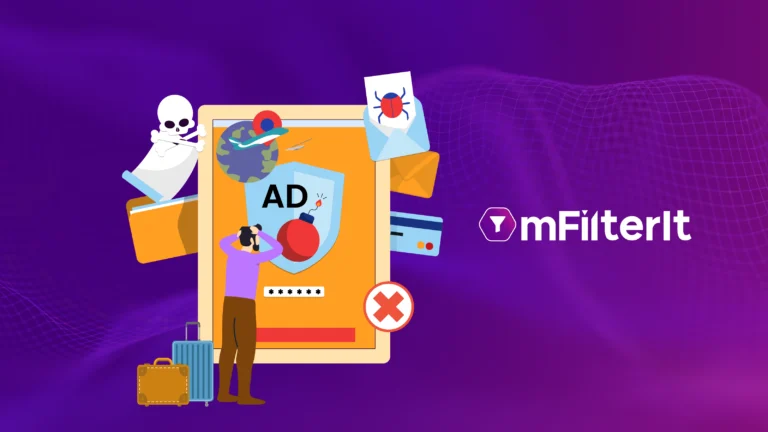The USA digital advertising industry significantly relies on lead generation strategies. For advertisers in the USA, landing pages are the backbone of their ad campaigns. Millions are spent each year on ads to drive traffic and capture user attention.
But traffic is not always equal to opportunity. Marketers often notice unsettling patterns – even when dashboards show high volume of engagement and ad traffic, clicks, and form fills, somewhere conversions still lag behind.
Why is this happening?
The issue lies in the quality of traffic. Even the most beautifully designed, highly optimized landing page doesn’t convert if the people (or bots) visiting it were never real prospects in the first place.
Bots, click farms, and fraudulent traffic infiltrate digital ad ecosystems and degrade the lead quality, leaving advertisers with misleading reports and empty pipelines.
This not only leads to wasted ad spend but also performance inefficiencies across campaigns.
To overcome this challenge, improve landing page traffic quality and lead quality, brands need to rethink their landing page optimization strategies. Landing page optimization is no longer just about design, CTAs, or A/B testing; it is also about ad traffic validation and lead validation.
In this article, we will talk about:
- What is lead landing page optimization?
- The hidden threat brands in the USA need to be aware of.
- How can advertisers spot bot patterns themselves?
- Need for behavior analysis in landing page optimization – some practical steps to implement this
- How an ad traffic validation and lead validation solution helps?
What is Lead Landing Page Optimization?
Landing page optimization refers to the process of improving key elements of a landing page, such as design, messaging, and user experience to maximize conversions. A good landing page has a clear headline, persuasive copy, an easy-to-find call-to-action, and a layout that minimizes friction. All these steps help maximize conversion opportunities. But only if the traffic is real.
Advertisers often track clicks, form submissions, and engagement to guide optimizations. But bots quietly pollute the funnel, making A/B tests, bounce rates, and conversion data unreliable. This leads brands to optimize for noise while neglecting real buyers.
To break this loop, landing page strategies must go beyond surface-level optimizations. Incorporating behavioral analysis (like unusual browsing patterns or abnormal session times) and web fraud monitoring ensures traffic quality, helping brands achieve meaningful results and stronger ROI.
The Hidden Threat: How Bot Traffic Pollutes Lead Generation Campaigns
Bot traffic is one of the most damaging but often overlooked issues in digital advertising. In the USA, where ad spend is among the highest globally, bots exploit every opportunity, from fake clicks to automated lead form submissions. Moreover, these aren’t just spam bots; fraudsters now use sophisticated bots that mimic real human behavior and are harder to detect.
Pay-per-call campaigns are also a widely used lead generation method in the USA. However, instead of connecting advertisers with genuine prospects, fraudsters generate fake or automated calls to trigger payouts. This not only wastes budgets but also distorts campaign performance data, leaving marketers with no real customer engagement to build on.
Further, the impact is severe.
- Bots fill out lead forms with junk data, leaving sales teams chasing contacts that never convert.
- Fraudulent submissions make campaigns appear cheaper per lead, masking the true cost of acquiring real prospects.
- Inflated lead volumes give a false sense of demand, making it harder for marketers to forecast and allocate budgets effectively.
- With CRMs overloaded by bot-generated entries, genuine leads get neglected, reducing the chances of meaningful customer acquisition.
- Landing pages and ad creatives end up being optimized for fraudulent behavior instead of genuine prospects.
And when businesses base optimization decisions on false signals, it directly leads to long-term ROI damage.
That is why validating ad traffic based on various behavioral signals and parameters is no longer optional; it’s a core part of the landing page optimization strategy to combat web fraud.
DIY Guide: How Advertisers Can Spot Bot Patterns Themselves
While recognizing sophisticated bot behavior requires an advanced AI-ML-based ad fraud detection solution to be in place, many patterns of fraudulent activities can be uncovered using simple observation and existing analytics platforms. Advertisers and marketers in the USA can start by monitoring:
- Abnormal session duration: Bots often leave instantly, resulting in high bounce rates.
- Repeated form fills: Look for duplicate names, fake emails, or strangely perfect data entries.
- Analyze unnatural browsing patterns or scroll behavior: Real users skim unevenly; bots scroll mechanically, or not at all.
- Watch clicks patterns: Bots click too quickly, with no hesitation or natural flow.
- Unusual geographies/devices: Leads showing up from regions or devices outside your campaign targeting also indicates bot activity.
- Traffic spikes at odd hours: Sudden bursts of activity at 2 AM followed by dead ends or zero follow-ups.
- Junk conversion: High volume of form submissions, but emails bounce or calls go unanswered.
- Bot registrants and junk leads: CRMs filled with incomplete profiles, disposable email IDs, or leads that never respond waste sales resources.
These DIY checks act as early warning signs against bot traffic. This helps advertisers identify suspicious patterns before optimizing landing pages.
Why Behavior Analysis Complements Landing Page Optimization
When advertisers only optimize design and messaging of a landing page, they improve the chances that a visitor will take action. On the other hand, behavior analysis acts as the missing piece in the landing page optimization process.
Behavior analysis helps track how users move, click, and engage with a landing page or an ad, separating real prospects from fake ones.
By monitoring signals like irregular mouse movements, abnormal session durations, repeated form submissions, or patterns that don’t match natural human interaction, advertisers can separate genuine prospects from fraudulent traffic in real time.
As a result, this not only helps improve campaign efficiency but also improves lead quality. Sales teams receive fewer junk leads, reducing wasted effort. Marketers can make smarter budget allocation decisions when they’re working with clean data instead of bot-inflated numbers. Ultimately, it protects ROI by ensuring that every dollar spent is directed toward genuine prospects.
Practical Steps to Implement Behavior Analysis in Lead Landing Page Optimization Strategy
Advertisers don’t need to overhaul their entire setup to add behavioral checks to their campaigns. Simple steps can go a long way:
- Use analytics tools: Platforms like Google Analytics provide data around bounce rates, geo-distribution, and session times. Abnormal patterns often signal fraud.
- Heatmaps and session recordings: Tools like Hotjar or Microsoft Clarity reveal whether users scroll, hover, and click like humans.
- Form validation filters: Add CAPTCHAs, track time-to-fill, or set up email/phone format checks.
- Source-level tracking: Compare performance by ad channel or affiliate. Fraudulent traffic often clusters around certain partners.
- Continuous testing: Pair A/B tests with traffic validation to ensure you’re optimizing for real visitors.
- Deploy an Ad Fraud Detection Tool: While manual checks reveal patterns, ad fraud solutions provide real-time fraud detection, using behavior analysis and fraud monitoring to filter out bots before they distort the entire funnel.
How mFilterIt Helps Advertisers Detect Web Fraud
At mFilterIt, we help advertisers in the USA move beyond traditional fraud detection methods and take a more comprehensive approach towards traffic validation. Our web fraud solution – Valid8, helps identify bot traffic and detect fake leads using:
- Behavioral Analysis: Tracks user interactions like mouse movement, scroll depth, and click flow to flag patterns that bots mimic.
- Deterministic Checks: Uses rule-based signals like IP address, cookies, and metadata to quickly filter out low-level bot traffic.
- Heuristic Checks: Identifies fraud by matching against known bot patterns, including suspicious user-agent strings, changing IPs, or repetitive clicks.
- Device Fingerprinting: Builds a unique profile of each device using multiple attributes, helping spot sophisticated bots in real time.
- Lead Validation: Verifies form-fill data (emails, phone numbers, engagement) to ensure only genuine leads enter your CRM.
- Real-Time Fraud Detection: Detects and blocks fraudulent activities instantly, protecting the lead funnel before data is distorted.
Conclusion: Optimize for People, Not Bots
Lead landing page optimization is no longer just about better design or clearer CTAs. In today’s ad ecosystem, the real challenge is ensuring the traffic you optimize for is authentic. Bot traffic doesn’t just drain budgets, it warps data, misleads marketers, and lowers lead quality.
By combining landing page optimization with behavior analysis and ad traffic validation, advertisers in the USA can protect their ad spend, improve lead quality, and restore confidence in campaign performance.
Ready to stop bots from hijacking your landing pages? Partner with mFilterIt for advanced web fraud prevention and ensure every lead in your funnel is authentic, qualified, and worth your ad spend.



